Exploring the Architectural Wonders of Sewn Houses in Al Ain
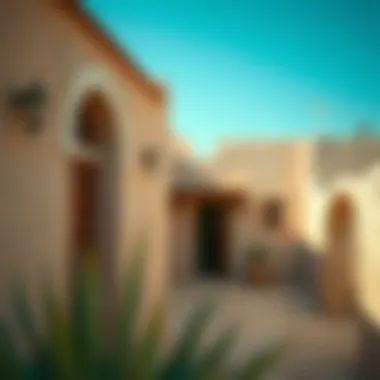
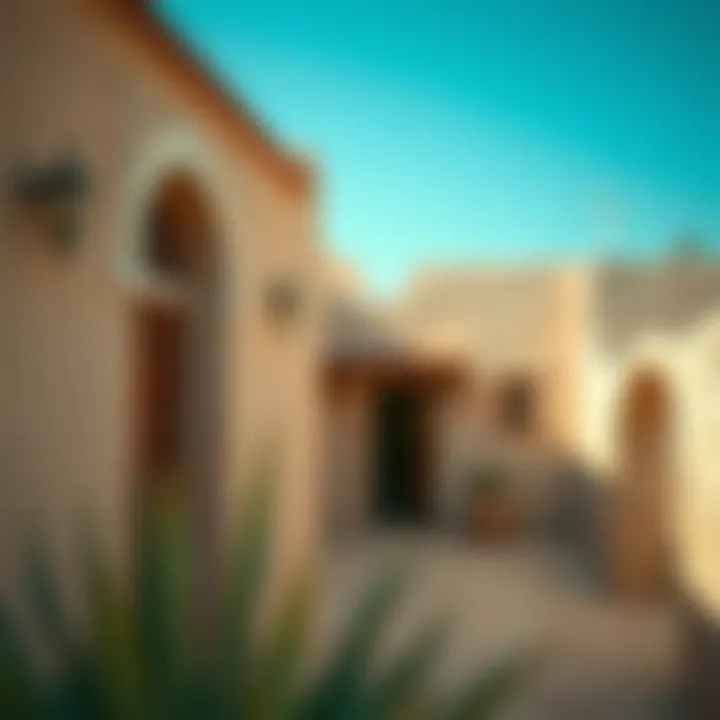
Intro
Sewn Houses in Al Ain carry a fascinating legacy that intertwines cultural heritage with modern living. These distinctive structures, often made from mud and palm fronds, represent more than just a place to live; they showcase a way of life deeply rooted in the traditions of the region. Understanding these homes means appreciating the local community's values, history, and adaptation to changing times.
In this exploration, we aim to highlight the architectural significance of Sewn Houses, while examining the shifting landscape of the real estate market in Al Ain. This discussion will also delve into current trends, neighborhood charms, and lifestyle possibilities that ultimately reflect the unique essence of living in this arid yet beautiful part of the UAE.
As we provide insights tailored for investors, agents, and expatriates, we’ll blend historical context with contemporary perspectives. Our goal is to offer a lens through which one can view the properties of Al Ain not just as physical structures, but as vibrant communities shaped by their inhabitants' traditions, culture, and aspirations.
Let’s venture into the intricate world of Sewn Houses, starting with an analysis of the market dynamics in this captivating city.
Foreword
Sewn houses hold a unique place in the cultural and architectural landscape of Al Ain. Understanding these structures sheds light on not just the historical context of a region but also its identity.
The significance of sewn houses extends beyond their physical construction; it intertwines with the social fabric and lifestyle of the Emirati people. For investors, agents, and expatriates looking at Al Ain as a viable option, comprehending the essence of sewn houses can steer important decisions.
These homes present various benefits. They reflect a heritage craft that still resonates in the modern architectural dialogue, showcasing the evolution of local design amidst global influences. Moreover, they offer a glimpse into sustainable living practices that many now seek.
One cannot discuss sewn houses without considering their historical backdrop, which contributes to their charm and intricacy. This article explores their roots, revealing a narrative steeped in tradition as well as innovation. By examining sewn houses, we not only appreciate their beauty, but we also explore how they evolve and adapt to the changing demands of urban life.
As we delve into the distinct features, cultural relevance, and real estate trends surrounding these architectural marvels, the aim is to arm investors and interested parties with knowledge. It prepares one to navigate the unique property landscape of Al Ain with insight and confidence.
"Understanding the essence of a locality often begins with its architecture; it tells a story of its people and their journey over time."
Defining Sewn Houses
Sewn houses are traditionally constructed structures rooted in Emirati culture, known primarily for the use of layered textiles stitched together to create functional and aesthetically pleasing walls. These houses typically bear flat roofs made from naturally found materials, allowing for efficient air circulation and room tranquility, even under the relentless heat of the desert sun.
The design often integrates natural light and space, resulting in an ambiance that transcends mere shelter. This architectural form not only serves the purpose of habitation but also reflects the social standing of its inhabitants through stylistic choices. Although one might encounter simple designs in rural areas, more elaborate structures are often found in urban settings, each telling aspects of family lineage and local traditions.
Historical Background
The history of sewn houses stretches back many generations, emerging from a necessity for adaptive architecture in the harsh desert climate. These structures were built using local materials such as date palm fronds and mud, stemming from a resourceful blend of necessity and innovation. By examining this aspect, we can better appreciate the resilience of Emirati craftsmen who turned scarcity into a canvas of creative expression.
As Al Ain developed, so did the techniques and styles associated with these houses, moving from rudimentary forms to more sophisticated designs that included decorative elements signifying wealth and status. The choice of colors, patterns, and construction techniques evolved, often influenced by neighboring cultures and modern needs.
Through time, sewn houses have withstood both the test of weather and contemporary architectural trends, standing proud as symbols of cultural legacy, thus cementing their importance in Al Ain’s architectural playground.
Understanding this background is imperative for anyone interested in the cultural and architectural values of this area, providing context for their relevance in today's fast-paced market.
Architectural Features
Understanding the architectural features of Sewn Houses in Al Ain is crucial in appreciating their significance within the broader context of Emirati culture and identity. These unique structures are not just homes; they embody a rich history and a narrative that speaks volumes about the ways in which localized materials and traditional techniques can create sustainable living environments. This section dissecting the architectural dimensions of Sewn Houses sheds light on key design elements, the materials used, and the construction methods employed.
Design Elements
The design of Sewn Houses is a testimony to the ingenuity of traditional Emirati architecture. These homes typically feature a rectangular layout with thick walls, which serve dual purposes: providing insulation against the desert heat and supporting the weight of the roof. You'll often see the absence of windows, replaced instead by narrow apertures that let in just enough light, maintaining privacy while still inviting the natural character of the surrounding environment.
- Flat Roofs: One of the standout characteristics is their flat roofs. This design isn’t merely aesthetic; it serves practical functions, such as gathering rainwater, a scarce resource in the desert.
- Decorative Elements: Many Sewn Houses display intricate motifs and designs on their walls, often using patterns that hold cultural significance. These embellishments speak to the artistic spirit of the Emirati people, connecting the home to cultural legacy.
- Open Courtyards: Central courtyards are commonly incorporated into the layout. They act as communal spaces promoting family interaction and social gatherings.
Materials Used
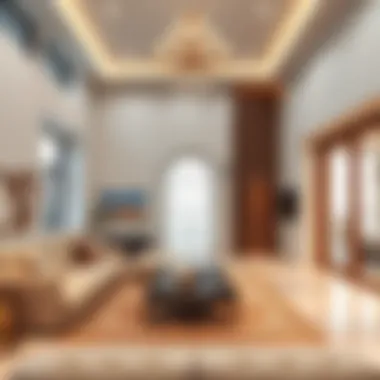
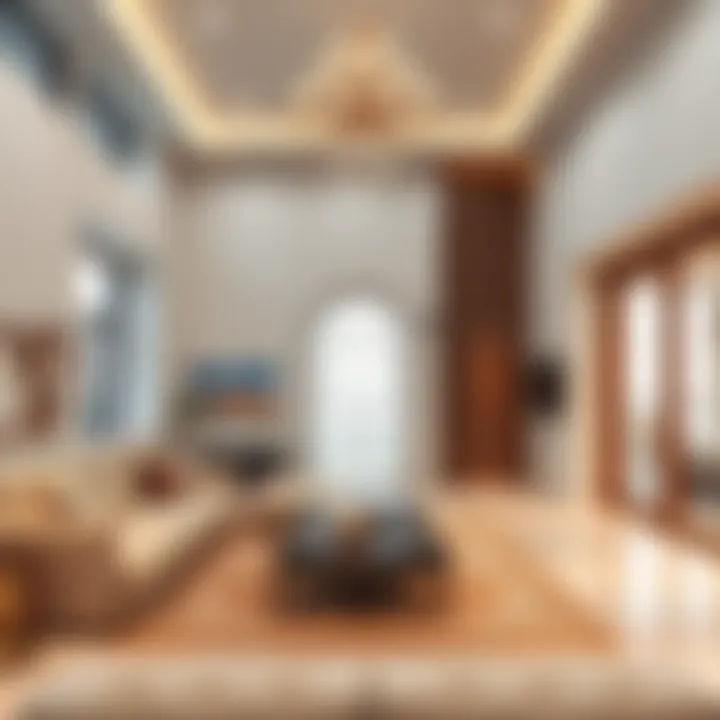
The materials used in constructing Sewn Houses are another pivotal aspect of their architecture. The region’s natural resources offer a palette that reflects local environmental conditions.
- Palm Fronds: Traditionally, the main component is palm fronds, sourced from date palms. Used for their flexibility and strength, these fronds form the structural framework.
- Clay and Mud: Earthy materials such as clay and mud provide remarkable insulation. They not only keep the interior cool in summers but also warm during cooler desert nights. This highlights a significant aspect of sustainable construction.
- Stone: Local stone may also be employed in foundations, ensuring durability and stability. By solely utilizing readily available materials, builders of Sewn Houses show how resourceful practices were designed to face climatic challenges.
Construction Techniques
The construction techniques of Sewn Houses reveal a profound respect for craftsmanship passed down through generations. This traditional methodology highlights the community’s relationship with its environment. Each construction phase involves meticulous care.
- Handcrafted Elements: Artisans typically work on-site, relying on teamwork to assemble the framework. Each palm frond is individually selected and shaped to ensure the integrity of the structure.
- Mud Plastering: Once the framework is established, mud plaster is often applied to the walls. This technique not only reinforces the structure but also provides a smooth finish that is aesthetically pleasing.
- Traditional Tools: Craftsmen utilize rudimentary tools, which echoes a sense of authenticity in the building process. It fosters a connection with long-standing traditions, making each house a living piece of history.
The architectural characteristics of Sewn Houses are significant, showcasing how Emirati heritage and environmental awareness shape local living spaces.
As Al Ain continues to develop, recognizing the architectural identity of Sewn Houses is vital for preserving cultural heritage. Understanding these architectural features offers valuable insights for investors, agents, and expatriates engaged in the real estate landscape, enhancing their appreciation for not just structures but the stories they tell.
Cultural Significance
The cultural importance of Sewn Houses in Al Ain cannot be overstated. They represent more than just a style of architecture; they are a testament to the Emirati way of life and a bridge connecting the past to the present. These structures embody traditional craftsmanship, community values, and a rich heritage that reflects the historical significance of the region. Within the context of this article, we will explore how Sewn Houses contribute to Emirati identity and what their intricate designs symbolize in local culture.
Sewn Houses and Emirati Identity
Sewn Houses have become synonymous with Emirati identity. Each stitch, each curve, narrates tales of generations that once thrived in harsh desert environments. The design of these homes is influenced deeply by the local environment, using available materials and traditional techniques passed down through the ages. The significance of their existence goes beyond aesthetics; they are a source of pride for many Emiratis.
Within these homes, families gather, traditions are passed on, and a sense of belonging is fostered. It’s not just about having a roof over one’s head; it’s about nurturing a lifestyle deeply rooted in custom.
„In the heart of every Sewn House lies the spirit of the Emirati people, woven tightly into the fabric of their stories.“
Moreover, as modernization sweeps through the region, there is a growing effort to preserve these cultural edifices. There’s a prevailing sentiment among the youth to reconnect with their heritage. This is evident in initiatives encouraging the use of traditional building methods in contemporary architecture. Recognizing the past allows Emiratis to pave a deliberate path forward while respecting their roots.
Symbolism in Design
The design of Sewn Houses is rich in symbolism, with each element often representing deeper meanings. For example, the choice of colors, patterns, and even the layout holds significance. Bright colors may symbolize hope, joy, and community cohesion. Intricate geometric patterns pay homage to the Islamic heritage prevalent in the region, blending functionality with artistic expression.
From the outside, these houses might appear ordinary. However, once inside, it is apparent that the arrangement of spaces reflects social values. For instance, communal areas are often designed larger to foster family gatherings, whereas private spaces showcase personal identity and comfort. This aspect of design emphasizes a culture that values togetherness and hospitality, proving how architecture can be a reflection of social norms.
Here are a few key symbols commonly found in Sewn Houses:
- Patterns: Often geometric and symmetrical; represent order and harmony.
- Colors: Bright hues signify optimism and vitality, dark tones might reflect strength and stability.
- Open Spaces: Illustrate the importance of community and invite interaction.
Real Estate Trends in Al Ain
The realm of real estate in Al Ain has unfolded uniquely, particularly with the emergent focus on sewn houses. An amalgamation of tradition and modernity, these structures are not merely homes but cultural artifacts deeply embedded within the Emirati identity. Understanding the contemporary real estate trends in this region is vital for potential investors, agents, and expatriates who wish to delve into the local property market.
Market Overview
The property market in Al Ain has seen a noteworthy shift, especially in the wake of economic diversification and tourism initiatives encouraged by the government. The population growth, both from expatriates and locals, has led to an increasing demand for quality housing. Sewn houses, in particular, have gained traction as they symbolize a blend of heritage and comfort. In the past couple of years, prices in specific neighborhoods have been on the rise due to their desirability.
- Rising Demand: There's a distinct preference for residential properties that resonate with cultural aesthetics.
- Price Trends: Compared to 2023, the trends from the past year show a moderate increase of about 5% in housing prices, especially in areas known for their sewn houses.
- Neighborhood Dynamics: Areas like Al Mutaredh and Al Jimi are becoming increasingly popular, attracting both local and expatriate communities.
"Sewn houses are more than just residential options; they represent a lifestyle choice intertwining community and cultural heritage."
Investment Opportunities
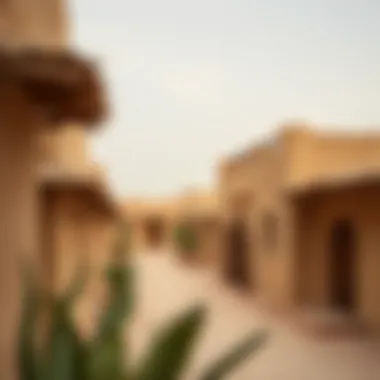
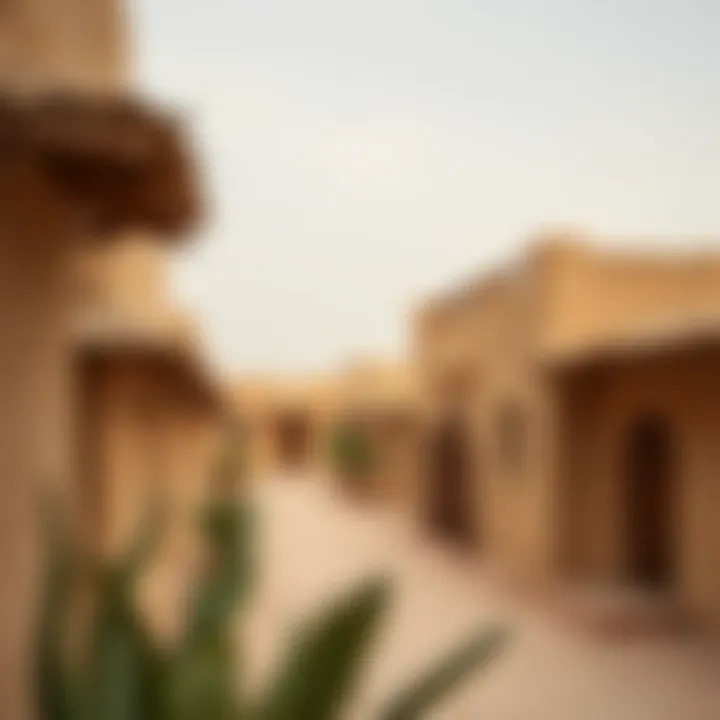
For investors eyeing opportunities in Al Ain, the market is ripe with potential, particularly surrounding sewn houses. As the region pushes for sustainability and cultural preservation, there are various avenues to explore:
- Cultural Heritage Development: Investment in refurbished sewn houses can yield substantial returns, as they appeal to a market looking for authentic experiences.
- Short-term Rentals: Given the growing tourism sector, properties can be converted into charming vacation rentals. Tourists often seek unique accommodations during their stay.
- Collaborative Projects: Partnering with local developers who focus on preserving architectural heritage. This collaborative spirit can open doors to community-based projects that also attract government funding.
Comparative Analysis with Other Regions
When comparing Al Ain’s real estate trends to neighboring areas and international locales, a few stark differences can be noted. Unlike the fast-paced hustle of Dubai, Al Ain offers a slower, more laid-back lifestyle while preserving its cultural essence.
- Cultural Resonance: Properties in Al Ain, particularly sewn houses, provide a cultural context lacking in more commercialized areas.
- Price Stability: Al Ain has shown a robustness to market fluctuations, holding steady prices compared to Dubai's volatile spikes.
- Sustainability Focus: While cities like Abu Dhabi invest heavily in modern architecture, Al Ain’s focus on integrating traditional designs with modern sustainable practices sets it apart.
Investing in real estate in Al Ain is not merely about monetary gain; it’s about engaging with a community and contributing to the preservation of an architectural legacy. The trends observed paint a promising picture for potential investors willing to dive into this distinctive market.
Sewn Houses in Modern Context
Sewn houses, emblematic of Al Ain's rich architectural history, take on a fresh significance in today's fast-paced world. With an increasing focus on sustainability and cultural identity, these structures are not just remnants of the past but rather serve practical and aesthetic purposes that resonate with contemporary values. The importance of discussing sewn houses in the modern context stems from their ability to bridge traditional craftsmanship with modern design principles, creating spaces that align with the ecological and cultural expectations of today's homeowners.
Contemporary Designs
When we talk about contemporary designs in the realm of sewn houses, we begin to notice a delightful interplay between heritage and modernity. For instance, architects are incorporating open floor plans while maintaining the traditional layout of sewn houses, which originally maximized airflow and light. This approach melds the timeless charm of local design with the newfound demand for spacious and functional living areas.
The aesthetic of the sewn house is evolving as well; designers are playing with color palettes, integrating bold hues into the original earthy tones, thus reflecting the vibrant lifestyle of today's residents. You might see a classic sewn house renovated with large windows that provide a panoramic view of the surrounding desert or lush palm groves, enhancing the overall living experience.
"Sewn houses today are not simply places to live; they are statements showcasing a blend of identity and modernity."
Furthermore, you will find the incorporation of smart technologies in these homes without erasing their cultural essence. Features like energy-efficient cooling systems or smart irrigation for gardens are not just practical. They also symbolize a step towards a harmony where tradition meets innovation.
Sustainability Practices
In the discourse about sewn houses, sustainability practices are becoming more crucial than ever. Al Ain's climate demands that the architectural form meets environmental challenges head-on. Many recent renovations aim not just to preserve the existing structure but to enhance its sustainability.
- Local Materials: Using traditional, locally sourced materials minimizes environmental impact. Clay, palm fronds, and stone have always been essential components of sewn houses, and leveraging these in modern construction reduces the carbon footprint.
- Natural Cooling Techniques: The ingenious designs of sewn houses naturally regulate temperature. High ceilings and thick walls are ideal for cooling, hence reducing reliance on air conditioning, which is a significant energy guzzler.
- Water Conservation: Many modern versions of sewn houses are incorporating rainwater harvesting systems to offset water usage. This is especially vital in a region where water scarcity looms large.
The future of sewn houses hinges not only on adapting to modern standards but embracing ecologically sound practices that speak to the heritage of Al Ain. By honoring the traditional techniques and integrating them with sustainable methods, the sewn house stands as a testament to what it means to live in harmony with the environment.
These conversations surrounding sewn houses reflect a broader trend of individuals seeking homes that represent their values while also contributing positively to their community and environment.
Comparative Architectural Styles
Exploring the myriad architectural styles that influence sewn houses in Al Ain unveils a complex tapestry of cultures and traditions. The significance of these comparative architectural styles extends beyond simple aesthetics; they illuminate the socio-historical journey of the region, providing context to both the old and the new. For investors and expatriates, understanding these styles is crucial, as it offers insights into local preferences and market tendencies.
Influences from Other Cultures
Sewn houses, while distinctly Emirati, are not formed in isolation. They have absorbed elements from various cultures, enriching their design and functionality. For instance, the use of natural materials in sewn houses can be traced back to ancient trading routes with Persia and neighboring regions, where the locals exchanged ideas and construction methods. This blend of influences is evident in features like decorative arches and complex geometric patterns, which reflect a fusion of native and foreign artistic traditions.
- Persian Influence: The intricate tile work often seen in sewn houses bears a resemblance to traditional Persian mosaics. These decorative elements add not just beauty but also a sense of cultural continuity, breathing life into the historical narrative of Al Ain.
- Bedouin Traditions: The structure itself is deeply rooted in Bedouin practices, which emphasize sustainability and resourcefulness. The open design seen in many sewn houses is a nod to the nomadic lifestyle, fostering a connection with the surrounding environment.
"Architecture is the art of how to waste space." – Philip Johnson. This sentiment resonates particularly in Al Ain, where the contrasting styles interact dynamically, encouraging homeowners to rethink and redefine their space, honoring both tradition and modernity.
Integration of Modern Technology
The architectural landscape of Al Ain is witnessing a silent revolution as modern technology fuses with traditional designs. The integration goes beyond just modernizing the aesthetic; it encompasses methodologies that enhance the structural integrity and sustainability of sewn houses:
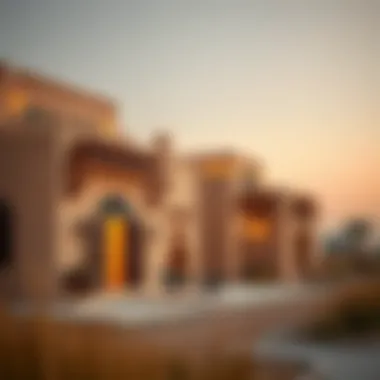
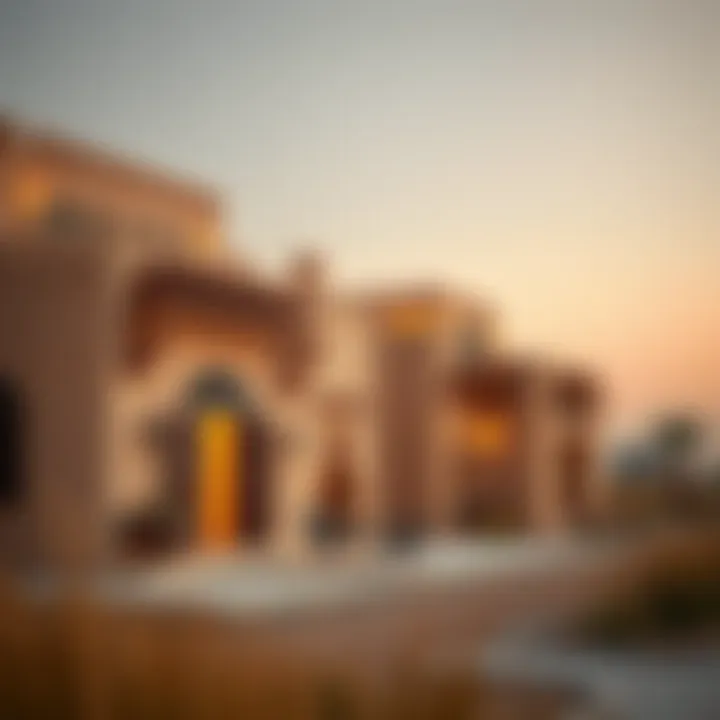
- Sustainable Materials: With an increasing focus on environmental responsibility, the introduction of eco-friendly materials into the construction of sewn houses has reshaped how builders approach traditional designs. Aspects such as solar panels and energy-efficient systems are now commonplace, reflecting a shift toward sustainable living standards.
- Smart Home Features: The rise of smart home technology offers residents greater control and monitoring capabilities. Automated lighting, heating, and even irrigation systems can now seamlessly blend with the traditional layout of sewn houses, making them not only stylish but also functional and efficient.
This synthesis of old and new signifies not just a physical change but a philosophical one—it embodies the spirit of progress while honoring the past. As Al Ain continues to grow and evolve, these comparative styles will serve as a crucial lens for understanding the shifts in architecture, community, and culture. Investors particularly should take note of these trends, as they offer clear indications of future property values and market desirabilities.
Lifestyle Considerations
Understanding the lifestyle considerations surrounding sewn houses in Al Ain provides invaluable insight into the unique living experiences these homes have to offer. In a region where tradition meets modernity, the architectural style of sewn houses plays a pivotal role in shaping community interactions and individual living experiences. This section will explore how sewn houses facilitate social ties, community involvement, and a sense of belonging, thereby enhancing the overall lifestyle of residents.
Community and Social Aspects
Sewn houses are more than just structures; they are emblematic of a way of life that emphasizes community and social interactivity. The layout of these homes typically encourages gatherings and interactions, where residents find themselves drawn into a tapestry of social events and neighborhood ties. The openness in design invites neighbors not just into one's home but also into the very fabric of familial and communal life.
For instance, many neighborhoods are organized around communal spaces that feature sewn houses. This aspect of design, entwined within the cultural heritage of the UAE, fosters strong relationships among residents. Families often participate in local events held in these shared spaces, such as festivals that celebrate local crafts and traditions. The history embedded in these houses often propels significant social narratives, connecting people through shared stories and experiences.
Moreover, flowers of social support often bloom in tightly-knit communities. Whether it's helping one another with household responsibilities or caring for elderly members, residents in sewn house neighborhoods frequently rely on each other, reinforcing societal norms and values that champion community spirit. Such interactions not only enhance a sense of security but also cultivate long-lasting friendships that can be quite enriching.
Residential Experience
Living in a sewn house is a journey rife with unique experiences shaped by the architecture's intrinsic qualities. The design is often quite pragmatic—aiming to provide comfort and functionality while reflecting cultural significance.
Inside, one finds that rooms are arranged to foster both privacy and family connections. The interior typically encourages shared activities, while still offering zones of personal space. Features such as traditional seating areas create a welcoming ambiance for guests. In essence, the sewn house is more than just a home; it’s a vessel of interaction, culture, and lifestyle.
Additionally, modern adaptations of sewn houses can be found that incorporate contemporary amenities without compromising traditional charm. For expatriates and investors alike, this melding of old and new creates an enticing residential opportunity that pays homage to local history while accommodating modern lifestyles. Even the materials used in these constructions often reflect a harmonious blend of past and present, providing longevity and sustainability in residential experience, essential for any discerning buyer.
To put it succinctly, residing in a sewn house provides not just a shelter but a way of life that values connectivity, community engagement, and a celebration of cultural roots. Amid the rapid developments in Al Ain, such experiences remind us of the importance of community ties, transforming houses into homes filled with warmth and life.
Future Outlook
The future of Sewn Houses in Al Ain resonates with increasing relevance within the broader architectural and real estate landscapes of the UAE. As we look ahead, several factors emerge that could shape the evolution and appreciation of these unique dwellings. Factors such as cultural preservation, sustainability initiatives, and market dynamics play pivotal roles in their future.
Predicted Trends in Architecture and Design
Architectural trends are continually evolving, and Sewn Houses are no exception. The blend of tradition and innovation is key. We may foresee a resurgence of interest in traditional building methods, emphasizing durability and environmental compatibility. Architects might draw inspiration from the original sewn techniques, incorporating them into modern designs that appeal to new homeowners. Moreover, the integration of smart home technology could provide a compelling mix of historical warmth with contemporary conveniences.
- Emphasis on Sustainability: The push for sustainable building practices may encourage more eco-friendly materials and methods, breathing new life into the sewn houses of Al Ain.
- Architectural Revitalization: As the UAE grapples with rapid urbanization, preserving architectural identity could be a leading trend in residential projects.
- Cultural Revival: We might see a cultural revival through design, with handmade elements or locally sourced materials highlighting a genuine connection to heritage.
Potential Developments in the Real Estate Market
The real estate market in Al Ain remains dynamic, and understanding the potential developments therein is crucial for prospective investors and homebuyers. Demand for unique residential properties is expected to rise as buyers increasingly seek character and narrative in their living spaces.
- Increased Interest from Expatriates: As Al Ain continues to establish itself as a cultural hub, expatriates looking for a richer living experience might gravitate towards Sewn Houses, influencing market prices.
- Investments in Tourism and Heritage Sites: With the government prioritizing heritage tourism, properties that embody Emirati culture, like Sewn Houses, could become spotlight properties for tourists, thereby enhancing their market value.
- Urban Development Projects: Planned developments aiming to blend modernity with historical attributes could spark new interest from investors looking to capture the essence of Al Ain while enjoying modern conveniences.
"Understanding the shifts in the market and trends in architecture will equip buyers with better insights and strategies to capitalize on the unique offerings of Sewn Houses in Al Ain."
Finale
The examination of Sewn Houses in Al Ain reveals their crucial place within not only the architectural landscape but also the cultural tapestry of the region. These structures present an amalgamation of history, tradition, and modernity, offering significant insights into the lifestyle and identity of the Emirati people.
Summary of Key Insights
- Historical Context: The story of sewn houses traces back to the late 19th and early 20th centuries, reflecting the adaptive use of local resources in a harsh desert environment. The houses serve as a testament to the resilience and ingenuity of the Emirati builders.
- Architectural Features: With their distinct design elements, including intricate patterns and materials sourced from the surrounding environment, sewn houses embody the integration of functionality and aesthetics. These structures often display mud, palm fronds, and other organic materials, showcasing a sustainable approach to living.
- Cultural Significance: Sewn houses are not just places of residence; they symbolize the cultural heritage and pride of the Emirati people. They represent values such as hospitality and community, deeply rooted in Emirati identity.
- Modern Trends: As Al Ain embraces modernization, sewn houses are evolving while preserving their traditional essence. There is a growing awareness of sustainable practices that align with contemporary architectural trends, ensuring that these homes remain relevant in the face of urban development.
Final Thoughts on Sewn Houses
"Preserving history does not mean living in the past; it encourages us to envision the future with a firm foundation of our roots."
By appreciating the intricate balance between tradition and modernity, stakeholders can forge a deeper connection with the lifestyle offerings in Al Ain. As such, the appreciation of sewn houses serves as a vital piece in the mosaic of the Dubai property landscape, ensuring an informed and culturally aware approach to investment in one of the UAE's most unique regions.











